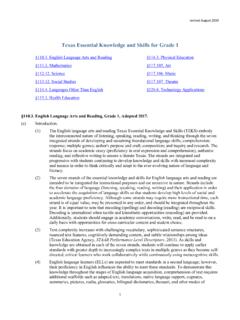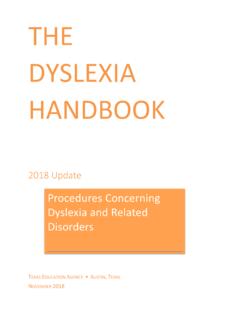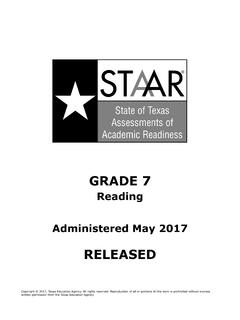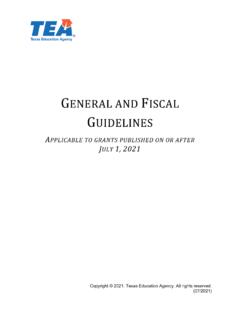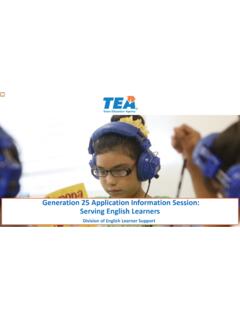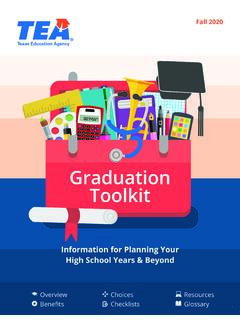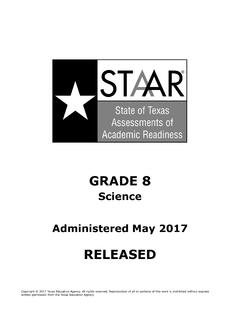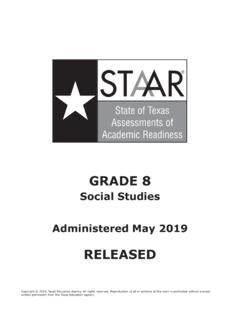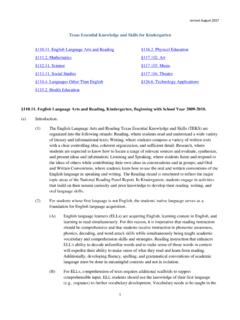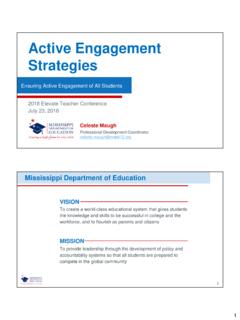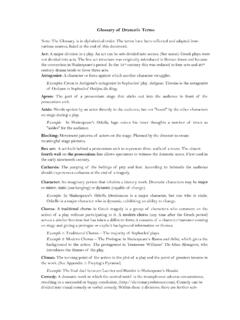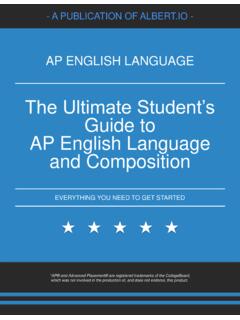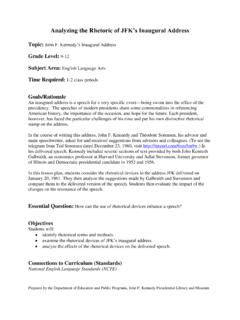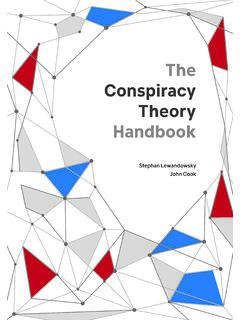Transcription of Texas Essential Knowledge and Skills for Grade 1
1 Revised August 2017. Texas Essential Knowledge and Skills for Grade 1. English Language Arts and Reading Physical Education Mathematics Art Science Music Social Studies Theatre Languages Other Than English Technology Applications Health Education English Language Arts and Reading, Grade 1, Beginning with School Year 2009-2010. (a) Introduction. (1) The English Language Arts and Reading Texas Essential Knowledge and Skills (TEKS) are organized into the following strands: Reading, where students read and understand a wide variety of literary and informational texts; Writing, where students compose a variety of written texts with a clear controlling idea, coherent organization, and sufficient detail; Research, where students are expected to know how to locate a range of relevant sources and evaluate, synthesize, and present ideas and information; Listening and Speaking, where students listen and respond to the ideas of others while contributing their own ideas in conversations and in groups; and Oral and Written Conventions, where students learn how to use the oral and written conventions of the English language in speaking and writing.
2 The Reading strand is structured to reflect the major topic areas of the National Reading Panel Report. In first Grade , students will engage in activities that build on their prior Knowledge and Skills in order to strengthen their reading, writing, and oral language Skills . Students should write and read (or be read to) on a daily basis. (2) For students whose first language is not English, the students' native language serves as a foundation for English language acquisition. (A) English language learners (ELLs) are acquiring English, learning content in English, and learning to read simultaneously. For this reason, it is imperative that reading instruction should be comprehensive and that students receive instruction in phonemic awareness, phonics, decoding, and word attack Skills while simultaneously being taught academic vocabulary and comprehension Skills and strategies. Reading instruction that enhances ELL's ability to decode unfamiliar words and to make sense of those words in context will expedite their ability to make sense of what they read and learn from reading.
3 Additionally, developing fluency, spelling, and grammatical conventions of academic language must be done in meaningful contexts and not in isolation. (B) For ELLs, comprehension of texts requires additional scaffolds to support comprehensible input. ELL students should use the Knowledge of their first language 1. revised August 2017. ( , cognates) to further vocabulary development. Vocabulary needs to be taught in the context of connected discourse so that language is meaningful. ELLs must learn how rhetorical devices in English differ from those in their native language. At the same time English learners are learning in English, the focus is on academic English, concepts, and the language structures specific to the content. (C) During initial stages of English development, ELLs are expected to meet standards in a second language that many monolingual English speakers find difficult to meet in their native language. However, English language learners' abilities to meet these standards will be influenced by their proficiency in English.
4 While English language learners can analyze, synthesize, and evaluate, their level of English proficiency may impede their ability to demonstrate this Knowledge during the initial stages of English language acquisition. It is also critical to understand that ELLs with no previous or with interrupted schooling will require explicit and strategic support as they acquire English and learn to learn in English simultaneously. (3) To meet Public Education Goal 1 of the Texas Education Code, , which states, "The students in the public education system will demonstrate exemplary performance in the reading and writing of the English language," students will accomplish the Essential Knowledge , Skills , and student expectations in Grade 1 as described in subsection (b) of this section. (4) To meet Texas Education Code, (h), which states, ".. each school district shall foster the continuation of the tradition of teaching United States and Texas history and the free enterprise system in regular subject matter and in reading courses and in the adoption of textbooks,".
5 Students will be provided oral and written narratives as well as other informational texts that can help them to become thoughtful, active citizens who appreciate the basic democratic values of our state and nation. (b) Knowledge and Skills . (1) Reading/Beginning Reading Skills /Print Awareness. Students understand how English is written and printed. Students are expected to: (A) recognize that spoken words are represented in written English by specific sequences of letters;. (B) identify upper- and lower-case letters;. (C) sequence the letters of the alphabet;. (D) recognize the distinguishing features of a sentence ( , capitalization of first word, ending punctuation);. (E) read texts by moving from top to bottom of the page and tracking words from left to right with return sweep; and (F) identify the information that different parts of a book provide ( , title, author, illustrator, table of contents). 2. revised August 2017. (2) Reading/Beginning Reading Skills /Phonological Awareness.
6 Students display phonological awareness. Students are expected to: (A) orally generate a series of original rhyming words using a variety of phonograms ( , - ake, -ant, -ain) and consonant blends ( , bl, st, tr);. (B) distinguish between long- and short-vowel sounds in spoken one-syllable words ( , bit/bite);. (C) recognize the change in a spoken word when a specified phoneme is added, changed, or removed ( ,/b/l/o/w/ to/g/l/o/w/);. (D) blend spoken phonemes to form one- and two-syllable words, including consonant blends ( , spr);. (E) isolate initial, medial, and final sounds in one-syllable spoken words; and (F) segment spoken one-syllable words of three to five phonemes into individual phonemes ( , splat =/s/p/l/a/t/). (3) Reading/Beginning Reading Skills /Phonics. Students use the relationships between letters and sounds, spelling patterns, and morphological analysis to decode written English. Students will continue to apply earlier standards with greater depth in increasingly more complex texts.
7 Students are expected to: (A) decode words in context and in isolation by applying common letter-sound correspondences, including: (i) single letters (consonants) including b, c=/k/, c=/s/, d, f, g=/g/ (hard), g=/j/ (soft), h, j, k, l, m, n, p, qu=/kw/, r, s=/s/, s=/z/, t, v, w, x=/ks/, y, and z;. (ii) single letters (vowels) including short a, short e, short i, short o, short u, long a (a-e), long e (e), long i (i-e), long o (o-e), long u (u-e), y=long e, and y=long i;. (iii) consonant blends ( , bl, st);. (iv) consonant digraphs including ch, tch, sh, th=as in thing, wh, ng, ck, kn, -dge, and ph;. (v) vowel digraphs including oo as in foot, oo as in moon, ea as in eat, ea as in bread, ee, ow as in how, ow as in snow, ou as in out, ay,ai, aw, au, ew, oa, ie as in chief, ie as in pie, and -igh; and (vi) vowel diphthongs including oy, oi, ou, and ow;. (B) combine sounds from letters and common spelling patterns ( , consonant blends, long- and short-vowel patterns) to create recognizable words.
8 (C) use common syllabication patterns to decode words, including: 3. revised August 2017. (i) closed syllable (CVC) ( , mat, rab-bit);. (ii) open syllable (CV) ( , he, ba-by);. (iii) final stable syllable ( , ap-ple, a-ble);. (iv) vowel-consonant-silent "e" words (VCe) ( , kite, hide);. (v) vowel digraphs and diphthongs ( , boy-hood, oat-meal); and (vi) r-controlled vowel sounds ( , tar); including er, ir, ur, ar, and or);. (D) decode words with common spelling patterns ( , -ink, -onk, -ick);. (E) read base words with inflectional endings ( , plurals, past tenses);. (F) use Knowledge of the meaning of base words to identify and read common compound words ( , football, popcorn, daydream);. (G) identify and read contractions ( , isn't, can't);. (H) identify and read at least 100 high-frequency words from a commonly used list; and (I) monitor accuracy of decoding. (4) Reading/Beginning Reading/Strategies. Students comprehend a variety of texts drawing on useful strategies as needed.
9 Students are expected to: (A) confirm predictions about what will happen next in text by "reading the part that tells";. (B) ask relevant questions, seek clarification, and locate facts and details about stories and other texts; and (C) establish purpose for reading selected texts and monitor comprehension, making corrections and adjustments when that understanding breaks down ( , identifying clues, using background Knowledge , generating questions, re-reading a portion aloud). (5) Reading/Fluency. Students read Grade -level text with fluency and comprehension. Students are expected to read aloud Grade -level appropriate text with fluency (rate, accuracy, expression, appropriate phrasing) and comprehension. (6) Reading/Vocabulary Development. Students understand new vocabulary and use it when reading and writing. Students are expected to: (A) identify words that name actions (verbs) and words that name persons, places, or things (nouns);. (B) determine the meaning of compound words using Knowledge of the meaning of their individual component words ( , lunchtime).
10 (C) determine what words mean from how they are used in a sentence, either heard or read;. 4. revised August 2017. (D) identify and sort words into conceptual categories ( , opposites, living things); and (E) alphabetize a series of words to the first or second letter and use a dictionary to find words. (7) Reading/Comprehension of Literary Text/Theme and Genre. Students analyze, make inferences and draw conclusions about theme and genre in different cultural, historical, and contemporary contexts and provide evidence from the text to support their understanding. Students are expected to: (A) connect the meaning of a well-known story or fable to personal experiences; and (B) explain the function of recurring phrases ( , "Once upon a time" or "They lived happily ever after") in traditional folk- and fairy tales. (8) Reading/Comprehension of Literary Text/Poetry. Students understand, make inferences and draw conclusions about the structure and elements of poetry and provide evidence from text to support their understanding.
